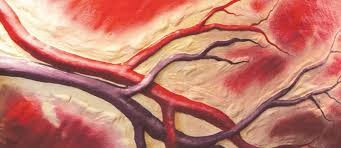Limited therapeutic options and the heart’s inability to regenerate healthy cells after heart attacks are parts of factors that cause sudden death in heart attack patients. Scientists are exploring ways to reprogram scar tissue cells into healthy heart muscle cells to reduce death.
Creation of cardiomyocytes with genetic signatures that closely mimic those found in healthy adult heart muscle cells can solve the problem. The other reprogramming approach leads to the creation of cardiomyocytes with more embryonic cell signatures.
The differences in the cardiomyocytes generated using these two methods are
Cardiomyocytes, the cells responsible for the beating of the heart, are essential to repairing the heart after injury. But after injury, such as a heart attack, many of these cells are irreversibly lost; they’ve been turned into scar tissue cells.
The replacement of these lost cells with patient-specific cardiomyocytes has gained attention as a potential therapy because existing healthy heart tissue better accepts these cells and because of increased recovery rates. Patient-specific cardiomyocytes also offer unique advantages for drug screens to help doctors identify each patient’s drug type and dosage.
There are presently two widely practiced approaches to generate patient-specific cardiomyocytes.
In the first approach, an adult connective cell called a fibroblast is reprogrammed back into a naïve embryonic stem cell-like state. Once in this naïve state, the cell has the potential to develop into any cell type in the body, but scientists direct it to develop into a cardiomyocyte. These newly created cardiomyocytes are called induced pluripotent stem cell cardiomyocytes iPSC-CM.
In the second approach called direct cardiac reprogramming, a fibroblast is directly converted into a cardiomyocyte, without having to first be reprogrammed into a naïve embryonic stem cell. These new cardiomyocytes are called induced cardiomyocytes iCM. The researchers found that both methods resulted in cells with classic cardiomyocyte molecular features. However, by comparing the unique set of genes activated or not activated in each group of cells, the researchers found that iPSC-CMs more closely resembled embryonic cardiomyocytes, while iCMs more closely resembled adult cardiomyocytes.
Researchers also found that iPSC-CMs feature more active genes and a higher number of genes poised to be either activated or repressed a trait more commonly found in potent cells.
Metabolically, iPSC-CMs had a higher expression of glycolytic genes while iCMs had a higher expression of genes involved in fatty acid oxidation, the primary means of energy production in adult hearts.
In iPSC-CMs, heart muscle cells called sarcomeres, which give the heart a striated look, were less organized than in iCMs. The contractibility of cardiomyocytes as measured by the intake and removal of calcium was also greater in iCMs, suggesting that iCM cells are more mature than iPSC-CM cells.
haleplushearty.blogspot.com


